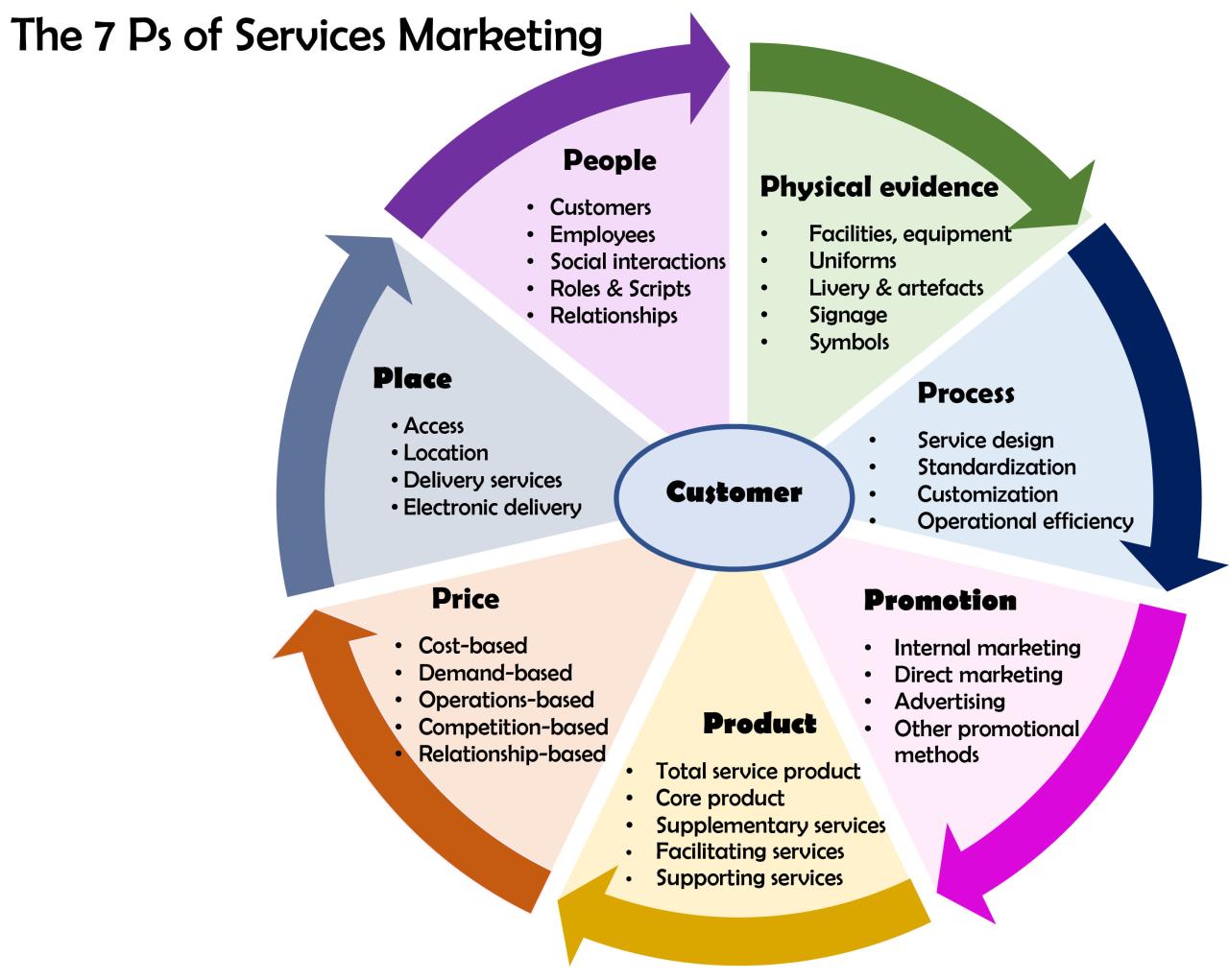Marketing Baby and Children Products to Meet Modern Parenting Needs sets the stage for this enthralling narrative, offering readers a glimpse into a story that is rich in detail with product advertising style and brimming with originality from the outset. In today’s fast-paced world, the landscape of parenting has evolved significantly, influenced by technological advancements and shifting demographics. Modern parents are looking for products that are not only functional but also innovative, sustainable, and tailored to their unique lifestyles, creating a vibrant marketplace ripe for targeted marketing strategies.
Understanding Modern Parenting Trends
The landscape of parenting is rapidly evolving, shaped by societal changes, technological advancements, and shifting consumer preferences. Today’s parents are navigating a complex array of influences that dictate their purchasing decisions for baby and children’s products. By understanding these trends, brands can tailor their marketing strategies to better meet the needs of modern families.One of the significant trends influencing modern parenting is the growing emphasis on sustainability and eco-friendliness.
Parents are increasingly seeking products that not only meet their children’s needs but also contribute positively to the environment. This shift has led to a surge in demand for organic, biodegradable, and ethically sourced materials. Additionally, the rise of social media and online communities has transformed how parents share product information, influencing their purchasing decisions through peer recommendations and reviews.
Key Demographic Shifts Among Modern Parents
The demographic landscape of modern parents is diverse and evolving, reflecting changes in society and family structures. Understanding these shifts allows marketers to identify target audiences effectively. Currently, millennial and Gen Z parents are the predominant consumer groups, prioritizing convenience and practicality in products. This generation values experiences over possessions, which influences their buying behavior.
- Increased Diversity: Modern families are more multicultural and varied, leading to a broader range of preferences and needs in product offerings.
- Later Parenthood: Many parents are choosing to start families later in life, leading to different spending habits and priorities compared to previous generations.
- Dual-Income Households: With both parents often working, convenience and time-saving features in products are becoming crucial factors in purchasing decisions.
Impact of Technology on Parenting and Product Development
Technology is reshaping the parenting experience, driving innovation in product design and marketing strategies. From smart baby monitors to app-connected toys, technology enhances convenience and security for modern families.The integration of technology into parenting products has led to a more connected experience for parents.
- Smart Devices: Products equipped with technology, such as wearables for infants that track health metrics, are gaining popularity.
- Online Shopping: E-commerce platforms and subscription services allow parents to easily access a wide range of products tailored to their children’s developmental stages.
- Social Media Influence: Platforms like Instagram and TikTok have become vital for brand exposure, allowing parents to discover and engage with products through visually appealing content.
Adapting to the technological landscape is no longer an option; it’s a necessity for brands targeting modern parents.
Product Development for Baby and Children’s Needs
The landscape of baby and children’s product development has evolved significantly, driven by the demands of modern parenting. Today’s parents are seeking innovative solutions that not only enhance their children’s development but also simplify their parenting journey. With a focus on safety, convenience, sustainability, and the integration of technology, product developers must consider a range of factors to meet these contemporary needs.The design process for baby and children’s products requires careful attention to both functional and emotional aspects.
Parents prioritize products that offer comfort and safety while also appealing to their aesthetic preferences. Moreover, the rise of eco-conscious parenting has led to increased demand for environmentally friendly materials and practices in product manufacturing.
Essential Features for Baby and Children’s Products
Parents today look for a variety of essential features when selecting products for their children. Understanding these elements can guide the product development process effectively. Below is a list of critical features that resonate with modern parents:
- Safety Standards: Adherence to the highest safety regulations is non-negotiable. Products should be free from harmful chemicals and designed to minimize injury risks.
- Durability: Modern parents seek products that withstand wear and tear, offering longevity and value for money.
- Ease of Use: User-friendly designs enhance convenience for busy parents, allowing for quick setup and straightforward functionality.
- Eco-Friendliness: Sustainable materials and eco-conscious production methods are increasingly important, reflecting a commitment to the environment.
- Multifunctionality: Products that serve multiple purposes, like a crib that converts into a toddler bed, are highly desirable for their versatility.
- Smart Technology: The integration of technology, such as monitors with smartphone connectivity, offers modern parents enhanced peace of mind.
Innovative product examples that align with these needs include the use of breathable fabrics in baby carriers, ensuring both comfort and safety, and the advent of modular furniture that adapts as children grow. Another notable product innovation is the rise of app-connected thermometers that provide real-time data, allowing parents to monitor their child’s health with ease.
“In developing products for babies and children, safety, functionality, and sustainability must be at the forefront of design considerations.”
Effective Marketing Strategies
In an era where modern parenting is continuously evolving, brands must adapt their marketing strategies to effectively reach and engage today’s parents. Leveraging digital platforms and relationships is crucial to making meaningful connections with this demographic. Here, we explore strategies tailored specifically for marketing baby and children’s products, ensuring they resonate with modern parenting needs.
Engaging Modern Parents Through Social Media Platforms
Social media has transformed the way brands communicate with consumers, and for baby and children’s products, this is particularly vital. Engaging with modern parents effectively through social media involves understanding their preferences and the platforms they frequent. To successfully connect with parents, consider the following strategies:
- Utilize visually appealing content: Bright, colorful images of products in real-life situations attract parents’ attention. Showcasing children using the products can foster emotional connections.
- Share parenting tips and relatable content: By providing valuable information that addresses common parenting challenges, brands can position themselves as trusted resources, leading to increased engagement.
- Create interactive content: Polls, quizzes, and Q&A sessions encourage participation and establish a two-way conversation with your audience, enhancing brand loyalty.
Importance of Content Marketing in Building Brand Loyalty
Content marketing plays a crucial role in establishing long-term relationships with parents. It allows brands to convey their values, educate consumers, and cultivate trust over time. Parents are likely to remain loyal to brands that provide insightful and supportive content.Key elements to consider include:
- Educational blogs and articles: Well-researched, informative content addressing parenting trends, product usage, and developmental milestones keeps parents returning for more.
- Video tutorials: Engaging video content demonstrating product benefits and real-life applications helps parents visualize the value of products, making them more inclined to purchase.
- Personalized newsletters: Sending tailored content based on individual parenting stages creates a sense of community and connection, enhancing brand loyalty.
Role of Influencer Partnerships in Promoting Products, Marketing Baby and Children Products to Meet Modern Parenting Needs
Influencer partnerships have become a powerful tool in marketing baby and children’s products. Collaborating with influencers who resonate with your target audience can enhance brand visibility and credibility. Effective strategies for influencer partnerships involve:
- Choosing the right influencers: It’s vital to select influencers who share your brand values and have an authentic connection with their audience. Look for those with a genuine interest in parenting and family products.
- Creating authentic content: Encourage influencers to share their personal experiences with your products. Authentic testimonials resonate more with parents and can lead to higher conversion rates.
- Utilizing social media takeovers: Allowing influencers to take over your brand’s social media accounts for a day can provide fresh perspectives and engage followers in new ways.
Engaging modern parents requires adaptable strategies that reflect their lifestyles and values. Successful brands prioritize genuine connections.
Understanding Consumer Behavior

In the fast-paced world of modern parenting, understanding consumer behavior is essential for brands looking to capture the loyalty of parents. When it comes to selecting products for their children, parents are often guided by a variety of complex factors that influence their purchasing decisions. Analyzing these behaviors offers valuable insights into how brands can successfully position their products to meet the needs of today’s families.Parents exhibit distinctive purchasing behaviors driven by a combination of emotional and practical factors.
Safety, quality, and brand reputation are often at the forefront of their minds. The emotional connection between parents and their children can lead to heightened sensitivity to marketing messages that resonate with their desire to provide the best for their little ones. Thus, understanding the motivations that guide parents in their decision-making process is crucial for any brand aiming to thrive in this competitive market.
Factors Influencing Brand and Product Selection
Various motivations drive parents to select specific brands or products over others. Recognizing these factors can empower marketers to tailor their strategies effectively. Below are key influences:
- Safety and Health Standards: Parents prioritize products that meet rigorous safety guidelines and are free from harmful chemicals. This concern leads to a preference for reputable brands known for their quality assurance.
- Brand Trust: Established brands that consistently deliver on their promises earn parental loyalty. Parents are more likely to repurchase from brands they trust, often influenced by peer recommendations and online reviews.
- Social Responsibility: Modern parents are increasingly inclined to support brands that demonstrate a commitment to sustainability and ethical practices. Products that are eco-friendly or socially responsible resonate well with this demographic.
- Innovative Features: Parents are drawn to products that offer innovative solutions to everyday challenges. Items that enhance convenience, such as multifunctional baby gear or smart technology, capture attention.
Motivations for Repeat Purchases
Understanding what drives repeat purchases among parents can provide brands with a significant advantage. Several factors contribute to this behavior, including:
- Consistent Quality: Parents who have positive experiences with a product are likely to return for more, valuing reliability and performance over time.
- Brand Loyalty Programs: Incentives such as discounts, rewards points, or exclusive offers can encourage parents to remain loyal to a brand, fostering a relationship built on mutual benefit.
- Community Engagement: Brands that actively engage with their customers through social media or community events create a sense of belonging. This connection often translates into repeat purchases, as parents feel a part of the brand’s journey.
- Emotional Resonance: Marketing messages that elicit an emotional response, showcasing the joys and challenges of parenting, can deepen the bond between parents and brands, leading to sustained loyalty.
“Parents are not just consumers; they are advocates and community members, shaping preferences through shared experiences.”
Understanding these elements of consumer behavior allows brands to develop targeted marketing strategies that resonate with parents, ultimately fostering brand loyalty and driving sales.
Building Trust and Brand Loyalty
In today’s competitive marketplace for baby and children’s products, establishing trust and fostering brand loyalty is crucial for long-term success. Modern parents are discerning and prioritize brands that resonate with their values and meet their children’s needs. Building this trust is not just about quality products but also about engaging communications that reflect integrity and reliability.To establish trust with parents, marketing communications must be transparent, empathetic, and informative.
Brands need to articulate their core values clearly, demonstrating how those values align with the principles of modern parenting. Social proof, such as testimonials and user-generated content, further enhances credibility, allowing potential customers to see real-life applications of the products.
Methods for Establishing Trust
A strong foundation of trust can be built through various practices that resonate well with parents. The following methods are effective in establishing and maintaining that trust:
- Transparency in Communication: Be open about product ingredients, sourcing, and manufacturing processes to foster a sense of honesty.
- Quality Assurance: Implement rigorous quality checks and communicate certifications or awards received to reassure customers of product safety and reliability.
- Responsive Customer Service: Create channels for feedback and support, demonstrating a commitment to customer satisfaction and engagement.
- Empathetic Marketing: Craft messages that reflect the challenges and joys of parenting, showing understanding and relatability.
- Community Involvement: Engage with local communities and parenting groups, participating in events or supporting causes that matter to your audience.
Practices to Enhance Customer Engagement and Loyalty
Enhancing customer engagement and loyalty goes beyond initial purchases; it involves nurturing lasting relationships with parents. The following practices can help achieve this goal:
- Personalization: Tailor communications and product recommendations based on previous purchases and preferences, making parents feel valued and understood.
- Exclusive Offers: Provide loyalty programs or exclusive discounts for repeat customers, rewarding their trust and encouraging future purchases.
- Content Marketing: Share valuable parenting tips, product usage ideas, and educational content through blogs and newsletters to keep customers engaged and informed.
- Social Media Engagement: Maintain an active presence on social media platforms, responding to comments and sharing user-generated content to foster community.
- Customer Feedback Loop: Regularly solicit feedback through surveys or reviews to demonstrate that customer opinions are valued and taken into account.
Examples of Brands with Loyal Customer Bases
Several brands have successfully built a loyal customer base in the baby and children’s product market by implementing effective trust-building strategies. Notable examples include:
- BabyBjörn: Known for its high-quality baby carriers, the brand emphasizes safety and functionality, achieving trust through transparent product information and a strong reputation.
- Pampers: Through targeted communication and ongoing engagement with parents, Pampers has established a loyal community that values their commitment to child health and development.
- L.O.L. Surprise! This brand has created a strong emotional connection with children and parents alike through engaging toys and active community participation, fostering brand loyalty.
- Chicco: Focused on family values, Chicco builds trust through its dedication to child safety and development, positioning itself as a reliable partner in parenting.
- Huggies: By consistently delivering quality products and engaging in meaningful conversations with parents, Huggies has developed a trusted brand recognized for its commitment to comfort and care.
Navigating Market Challenges
In today’s fast-paced world, marketing baby and children’s products involves navigating a landscape filled with unique challenges. From discerning consumer needs to addressing economic conditions, businesses must adopt innovative strategies to ensure their products resonate with modern parents. Recognizing and overcoming these challenges is essential for building a successful brand that meets the evolving expectations of families.Understanding the challenges associated with marketing baby and children’s products can provide valuable insights into how to adapt strategies effectively.
Parents today are more informed and selective than ever, often conducting thorough research before making purchases. This scrutiny can lead to apprehension regarding safety, efficacy, and value. Additionally, economic factors such as inflation and changing consumer behavior can significantly influence product pricing and marketing approaches. Companies must remain agile and responsive to these market dynamics to thrive.
Identifying Potential Market Challenges
Recognizing the various challenges faced by marketers in the baby and children’s sector is an essential first step. This understanding can help inform strategy development and marketing initiatives. Common challenges include:
- Increased Competition: The rise of e-commerce has led to a proliferation of brands, making it crucial for companies to differentiate their products effectively.
- Consumer Skepticism: Parents are wary of marketing claims, necessitating transparency and substantiated benefits.
- Safety Concerns: Safety regulations are stringent, and any product failure can lead to significant backlash and loss of trust.
- Economic Pressures: Fluctuations in the economy can impact disposable income, influencing purchasing decisions.
- Shifting Trends: Parenting styles and consumer preferences evolve rapidly, requiring continuous adaptation of products and marketing approaches.
Strategies for Addressing Common Objections
To foster trust and confidence among parents, brands must proactively address common concerns that may arise during the purchasing process. Implementing the following strategies can effectively alleviate doubts:
- Educative Marketing: Provide clear, informative content that Artikels product features, benefits, and safety standards.
- Testimonials and Reviews: Incorporate authentic customer testimonials and reviews to build credibility and trust.
- Transparency: Be open about sourcing, materials, and manufacturing processes to reassure parents of product safety and quality.
- Expert Endorsements: Collaborate with pediatricians or parenting experts to validate claims and provide authoritative opinions on product value.
- Flexible Return Policies: Offer customer-friendly return policies to reduce perceived risk associated with purchases.
Impact of Economic Factors on Pricing and Marketing
Economic conditions play a crucial role in shaping pricing strategies and marketing approaches for baby and children’s products. Understanding these impacts is key to aligning offerings with consumer expectations. Key considerations include:
- Price Sensitivity: During economic downturns, consumers become more price-sensitive, making it critical to strategically position products to offer perceived value.
- Market Research: Conduct thorough research to gauge consumer willingness to pay and adjust pricing strategies accordingly.
- Value Proposition: Emphasize the long-term benefits and cost-effectiveness of products to justify their price points.
- Promotional Offers: Implement special promotions or discounts to entice budget-conscious consumers without devaluing the brand.
- Economic Trends Monitoring: Stay informed about economic indicators that could influence consumer behavior, allowing for timely adjustments in marketing strategies.
“In a world where parents are overwhelmed with information, clarity, transparency, and trust are your greatest allies in navigating market challenges.”
Sustainability in Baby and Children’s Products
As parents become increasingly conscious of their environmental impact, sustainability has emerged as a critical factor in product development and marketing for baby and children’s products. Modern consumers are not only looking for products that are safe and effective for their children, but they also seek options that are environmentally responsible. The integration of sustainability into product development is essential for meeting the expectations of today’s eco-conscious parents.
This involves using materials that are not only safe for children but also have a minimal impact on the planet. Brands can capitalize on this trend by ensuring that their products are made with ethically sourced, recyclable, or biodegradable materials.
Eco-Friendly Materials and Practices
The choice of materials plays a vital role in creating sustainable products. The following eco-friendly materials are increasingly being adopted in the baby and children’s product industry:
- Organic Cotton: Grown without the use of synthetic pesticides and fertilizers, organic cotton is soft, breathable, and safer for a child’s sensitive skin.
- Bamboo: A highly sustainable resource, bamboo grows quickly and requires no pesticides. It can be used in clothing, toys, and even diapers.
- Recycled Materials: Products made from recycled plastics or fabrics help minimize landfill waste and reduce the need for new resources.
- Natural Rubber: Often used in pacifiers and teething toys, natural rubber is biodegradable and free from harmful chemicals.
Implementing sustainable practices is equally important. Brands can adopt the following strategies:
- Eco-Friendly Packaging: Using biodegradable or recyclable packaging materials can significantly reduce environmental impact.
- Energy-Efficient Manufacturing: Reducing energy consumption during production not only lowers costs but also minimizes carbon footprints.
- Waste Reduction Programs: Implementing programs to recycle or repurpose manufacturing waste can contribute to sustainability goals.
“Parents are increasingly choosing brands that reflect their values, particularly when it comes to sustainability.”
Consumer trends related to sustainability are reshaping purchasing decisions. There is a growing demand for transparency, where parents want to know the source and lifecycle of the products they buy. Brands that provide clear information about their sustainability practices are more likely to gain trust and loyalty from consumers. Recent studies indicate that eco-friendly product options have seen a marked increase in sales, as parents prioritize sustainability alongside functionality and safety.
This shift illustrates that sustainability is no longer just a trend; it is now a fundamental expectation within the marketplace.
Future Trends in Parenting and Product Marketing: Marketing Baby And Children Products To Meet Modern Parenting Needs
The landscape of parenting and product marketing is continuously evolving, driven by changes in consumer preferences, technological advancements, and societal shifts. As modern parents navigate the complexities of raising children, brands must remain agile and innovative to keep pace with these trends. Understanding the future landscape allows businesses to make informed decisions about product development and marketing strategies that resonate with today’s families.The emergence of new trends in parenting and product marketing signifies a shift towards a more personalized, technology-driven approach to child-rearing.
Brands that harness these trends can create products that not only meet the immediate needs of parents but also align with their long-term values and aspirations. A few key trends are set to shape the future of this domain, reflecting an increasing demand for convenience, sustainability, and health-conscious choices.
Personalized Parenting Solutions
The demand for personalized parenting products is on the rise, with parents seeking items tailored to their child’s unique needs and preferences. This trend is largely influenced by advancements in data analytics and artificial intelligence, which allow brands to offer customized solutions.
- Smart Baby Monitors: These devices provide tailored insights on a child’s sleep patterns, feeding schedules, and developmental milestones, helping parents make informed decisions.
- Subscription Boxes: Curated boxes that cater specifically to the age and interests of children allow for a personalized experience, delivering age-appropriate toys, books, and activities directly to parents’ doors.
- Customizable Baby Gear: Products like strollers and car seats that can be personalized with color, features, or accessories create a unique experience for families.
Sustainability and Eco-Friendly Practices
As environmental concerns grow, modern parents are increasingly prioritizing sustainability in their purchasing decisions. This trend is pushing brands to innovate and develop eco-friendly products that align with responsible parenting.
- Biodegradable Diapers: Brands that offer compostable diapers are meeting the demand for sustainable alternatives to traditional disposable options, reducing landfill waste.
- Organic Baby Food: The rise in health-conscious parents drives the popularity of organic, locally-sourced, and non-GMO baby food products.
- Recycled Materials in Toys: Companies are developing toys made from recycled plastics, supporting the circular economy while providing safe and enjoyable products for children.
Technology Integration in Parenting
The integration of technology into parenting is transforming how families interact with products. From smart devices to mobile apps, technology plays a pivotal role in shaping parenting experiences.
- Wearable Baby Devices: Products such as smart wearables that monitor a baby’s health metrics (heart rate, temperature) provide parents with peace of mind and real-time insights.
- Parenting Apps: Applications that offer parenting tips, track developmental milestones, and facilitate community support networks are becoming essential tools for modern families.
- Augmented Reality (AR) Toys: AR-enabled toys that blend physical play with digital experiences enhance children’s learning and engagement, catering to tech-savvy parents.
“Brands that embrace personalization, sustainability, and technology will not only meet the evolving needs of modern parents but also foster lasting relationships built on trust and relevance.”
By recognizing and adapting to these future trends, brands can position themselves as leaders in the baby and children’s product market, ensuring that they remain relevant and trusted in the eyes of consumers as they navigate the challenges of modern parenting.













